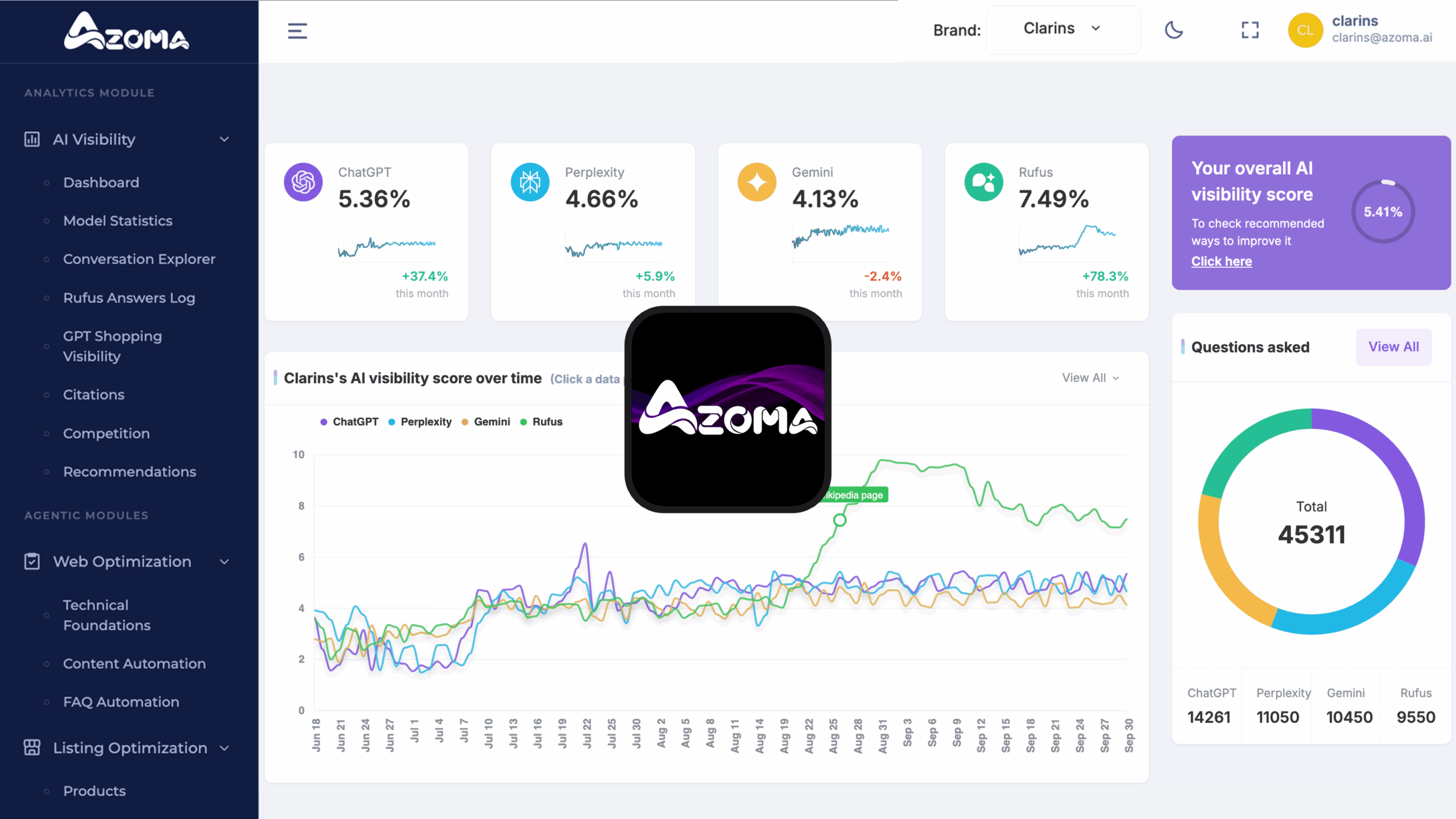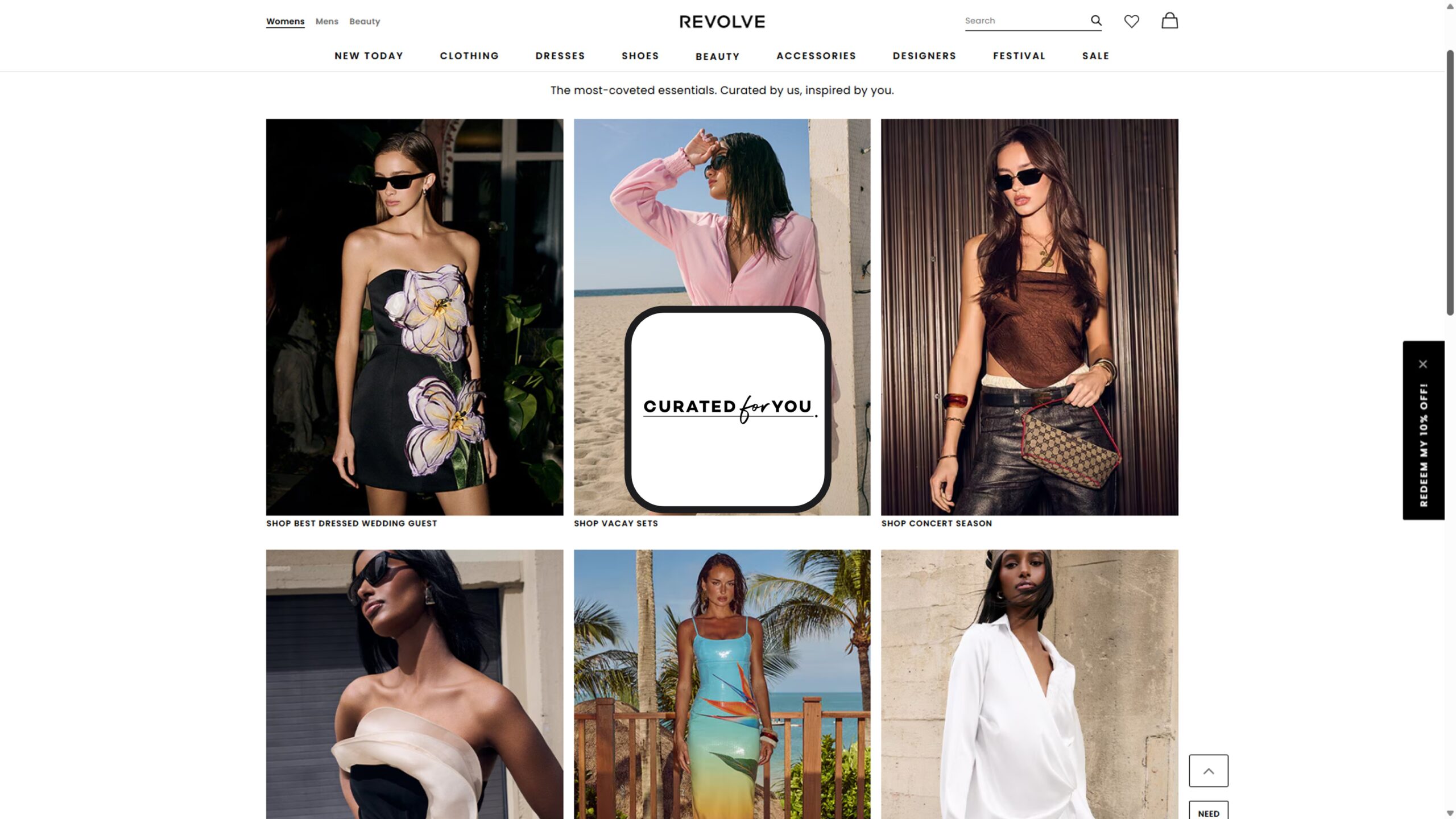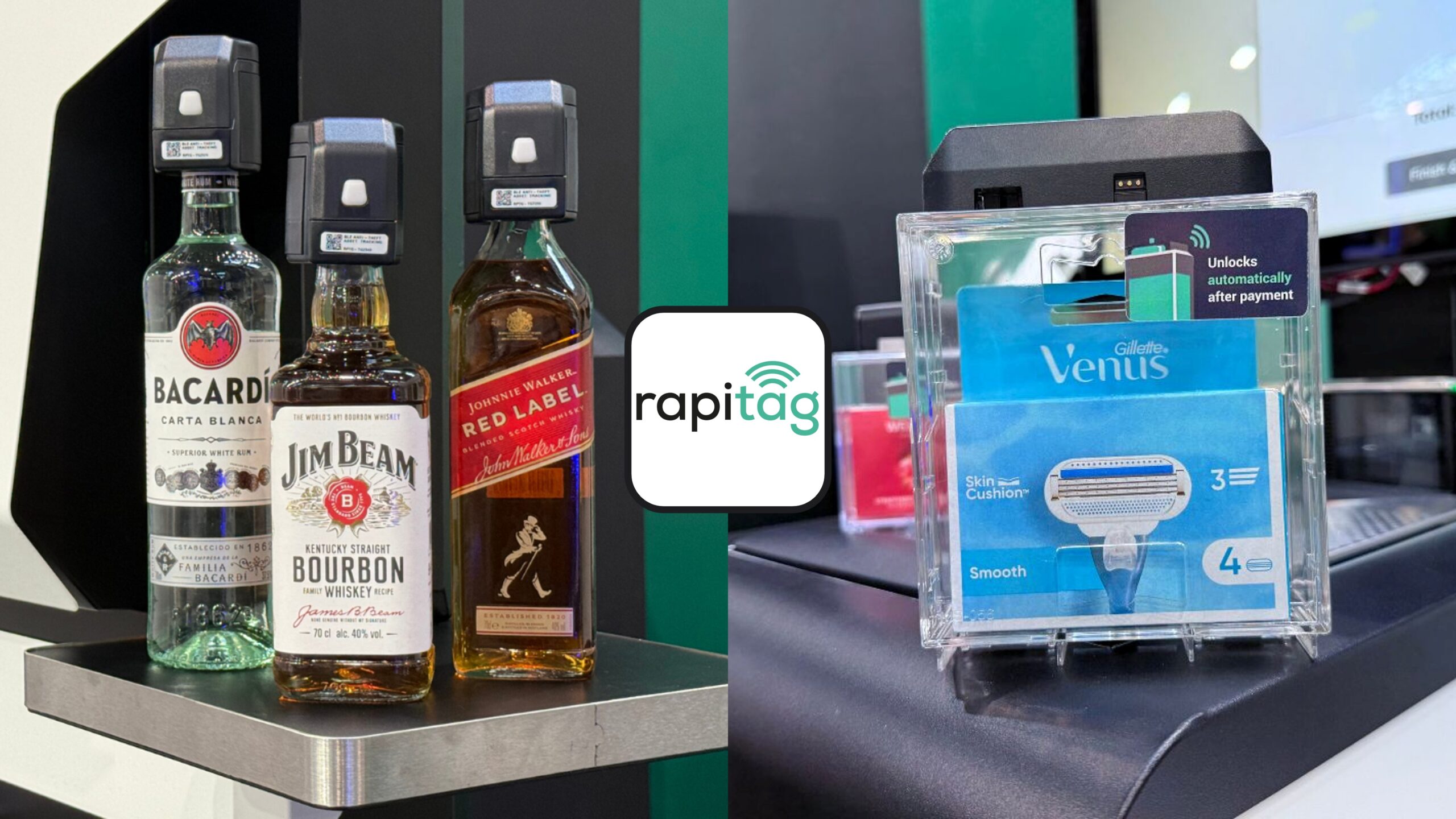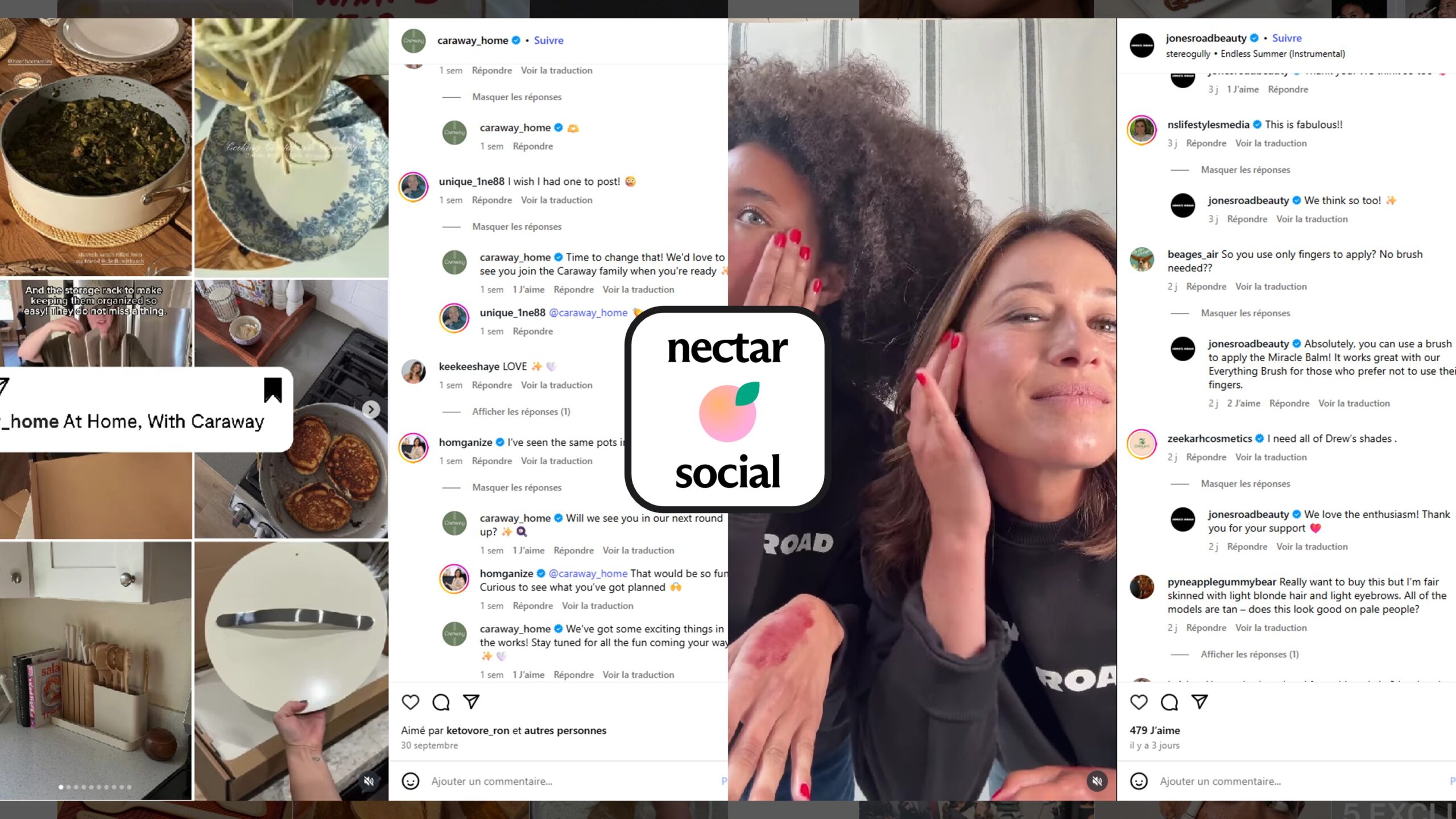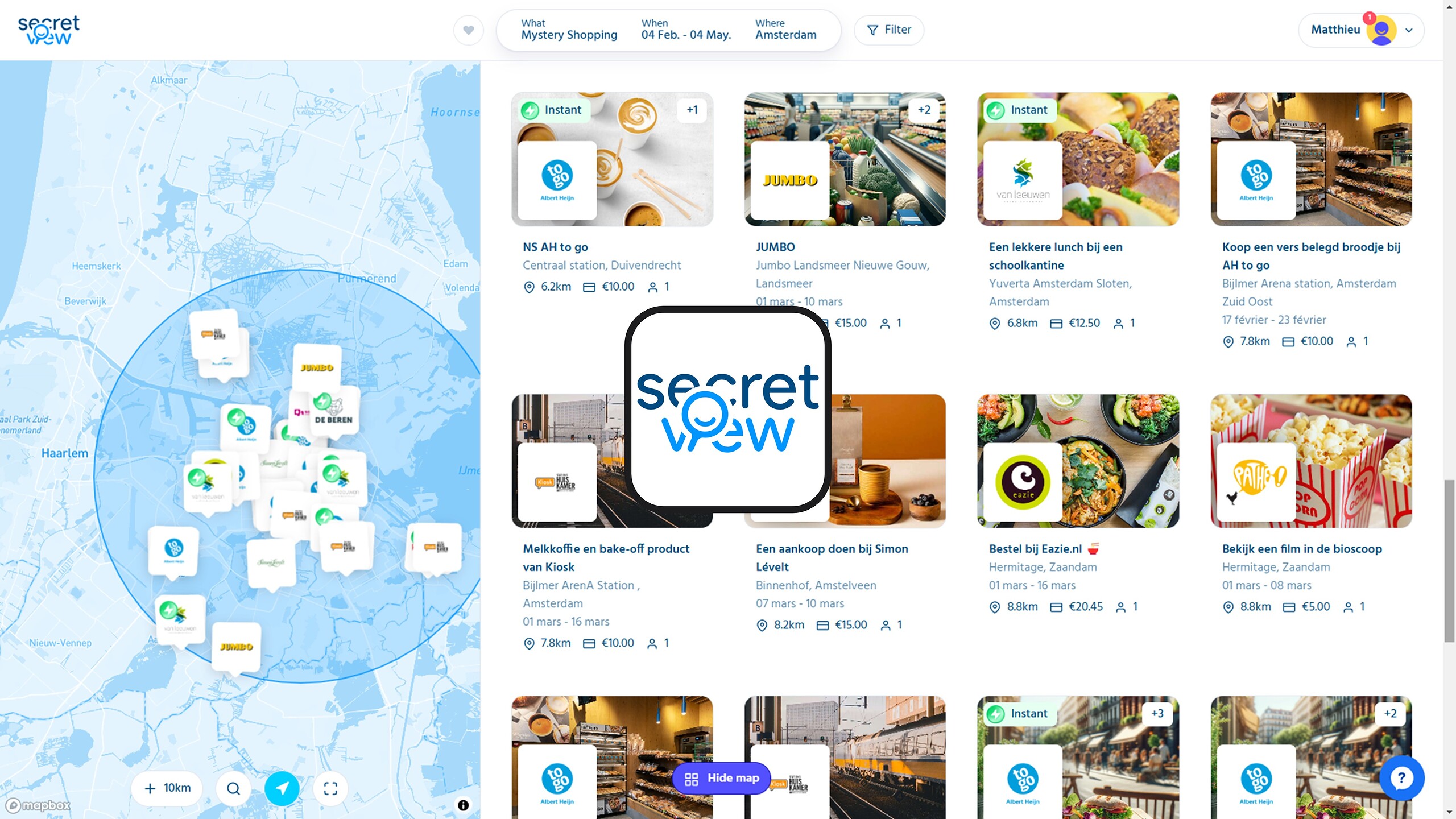The Canadian 🇨🇦 startup provides brands with an AI visibility score that quantifies their presence across LLMs, benchmarks them against competitors, and surfaces the exact questions audiences are asking. With these insights, Azoma enables brands to create and optimize content at scale, ensuring relevance not just in search engines but inside AI-driven discovery platforms.
Problem
Brands and retailers are losing visibility as consumer discovery shifts from search engines to AI-powered systems like LLMs. Traditional SEO metrics do not capture performance within these models, leaving companies blind to their share of voice, unaware of the questions their audiences are asking, and unable to optimize content for AI-driven discovery at scale.
Solution
Azoma tracks and measures a brand’s share of voice across Large Language Models (LLMs), giving visibility into how often and in what context the brand appears in AI-generated answers. It assigns an AI visibility score to benchmark performance against competitors and highlights the specific questions audiences are asking inside LLM environments. Armed with these insights, brands can generate and optimize content at scale using Azoma’s AI-driven workflows. This ensures their messaging is not only discoverable but also trusted and consistent across both traditional search engines and emerging AI-driven discovery platforms.
Benefits
- Gets accurate, trustworthy, and brand-verified answers when using AI systems like ChatGPT or Gemini.
- Finds relevant products, services, or information faster because content is optimized for AI-driven discovery.
- Experiences smoother interactions with brands across digital touchpoints, reducing misinformation or irrelevant results
- Gains a clear AI visibility score to measure and track their presence inside LLMs.
- Understands their share of voice relative to competitors in AI-driven search and discovery.
- Uncovers the real questions audiences are asking in LLMs, allowing them to create content that directly addresses demand.
- Scales content creation and optimization efficiently with AI workflows, reducing costs and accelerating time to market.
- Future-proofs their visibility strategy as discovery shifts from search engines to AI assistants.
References
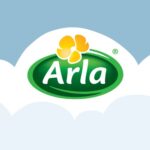
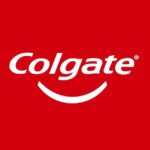
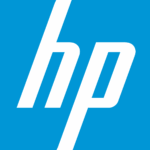

Business Cases
The brand was losing share of voice in AI assistants (ChatGPT, Gemini, etc.). They had very low “mentions” or “answers” inside LLMs to brand-adjacent queries. They also lacked insight on which questions users were asking in LLMs around their product categories, so content efforts were misaligned with AI discovery demand..
- Benchmarking their AI visibility score and calculating baseline share of voice versus competitors.
- Mining the LLM query space to surface the exact questions audiences were asking about their product category.
- Generating optimized content at scale (blogs, FAQs, product content) targeted at those questions, tuned for LLM ingestion and citation.
- Iterative optimization based on performance metrics inside LLMs.
- Baseline AI visibility score up by 250 % in 6 months
- Brand mentioned in > 60 % of target LLM answers vs < 20 % before
- Organic referral traffic from AI-driven channels increased by 35 %
- Cost per content unit dropped by 40 % due to scale and automation
- Estimated ROI: 4× return on content investment (i.e. for every €1 spent, €4 of attributable revenue or net benefit)
The brand had strong web SEO and content operations, but was mostly invisible within LLMs. When consumers asked product- or skin-care–related questions inside AI assistants, the brand was rarely cited, and competitors (or generic sources) dominated. They lacked insight into what questions their audiences were asking inside LLMs, and content creation efforts didn’t align with that demand.
- Conducted a baseline audit — measured AI visibility score, share of voice inside LLMs, and benchmarked against category rivals.
- Extracted the actual question set audiences were asking in LLMs around beauty, skincare, ingredients, routines.
- Built a content pipeline: AI-optimized answers, product guides, “how to” lists, FAQ content, all tuned for LLM ingestion and citation.
- Deployed iterative optimization: tracked which content was being cited, adjusted formats, internal linking, authority signals, and distribution to improve inclusion.
- AI visibility score increased from ~15 to ~65 in 6 months
- Share of voice in target LLM responses: ~10 % → ~50 %
- Traffic from AI-driven referrals (or LLM-attributed visits): +28 %
- Conversion rate on traffic from AI referrals: 1.8× higher than baseline
- Content cost per usable piece dropped by 35 % due to reuse, automation, and targeting
The brand had solid visibility in Amazon’s classic search, but was almost invisible inside Amazon’s new AI assistant Rufus. As shoppers begin asking questions via Rufus (e.g. “Which smart thermostat works with Alexa and Google Home?”), the brand’s products did not appear in the AI-driven recommendations. They lacked insight into which questions related to their category people were asking via Rufus and how to align their product listings and content to be surfaced by Rufus.
- Audited the brand’s Rufus AI visibility and benchmarked share of voice versus competitors.
- Mapped the question set users ask inside Rufus in the smart home / thermostat space.
- Generated optimized product content (descriptions, FAQs, use-case narratives, comparative guides) geared toward those questions, structured to align with Rufus’s recommendation logic (context, subjective attributes, scenarios).
- Iteratively monitored which content was being cited or surfaced by Rufus, and refined formats, metadata, and listing content accordingly.
- Rufus mention frequency (share of voice) for target queries: From ~5 % to ~45 %
- Visibility in AI-driven product answers. Before: Very low. After: High presence in top 3 responses
- Amazon referral traffic uplift from queries: +25 %
- Conversion rate from AI/referral traffic: Baseline +1.7×
- Content cost per usable optimized asset: minus 30 % via reuse, templates, AI workflows
- ROI: ~4.5× return on content & optimization spend

